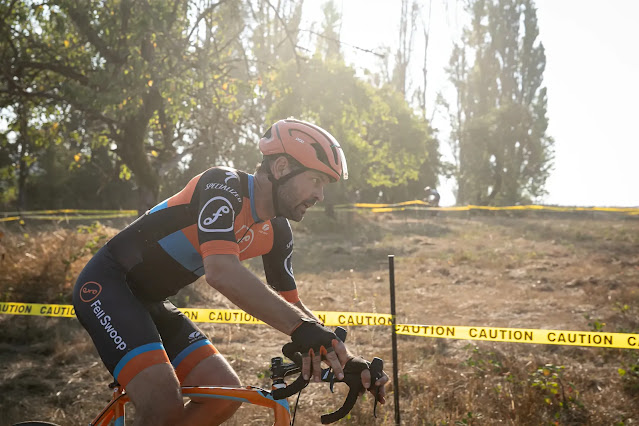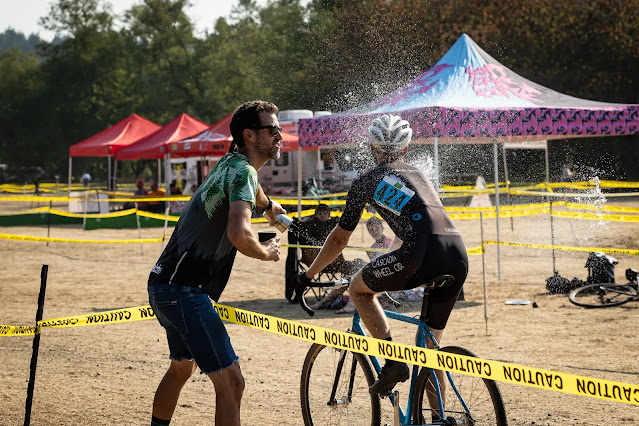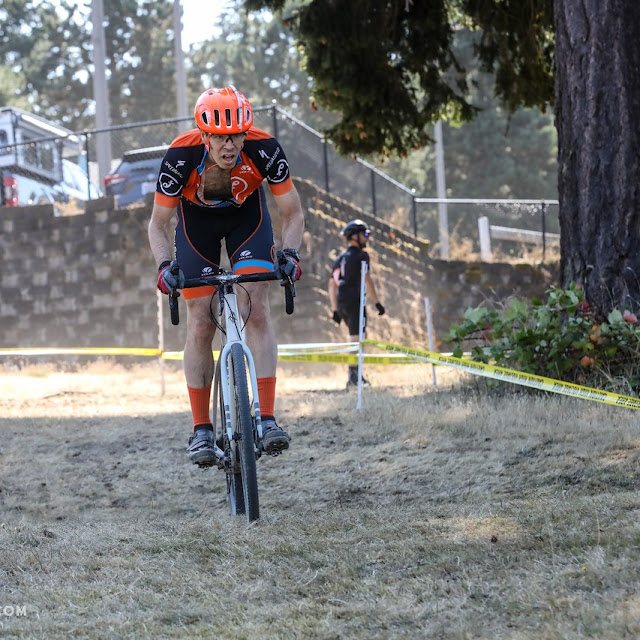Leavenworth was my 'A' race for this Spring. My training was tailored for this event and I had a strong desire to right the wrong that I created last year at this race. My racing team "Fell Swoop" was well represented with five riders of varying abilities.
The weather was warm and I started in my summer kit. A third water bottle containing three scoops of Tailwind drink powder but no water was tucked into my back pocket. The neutral roll out seemed slower than usual this year and I planned to stick next to team mates Thomas and Josh. That plan ended when I needed to stop and dismount after my chain dropped on the first shift of the day. I spent the next four miles inching my way forward in the slowly crawling peleton.
As we approached Eagle Creek road I advised Josh on how the race promoter Jake would honk the horn on his big BMW motorcycle to release us. I was rewarded for my helpful advice. The right shoulder openned up before me and I glided up to the front row just as we were let loose. I waited for two riders to take charge and then I latched on. This excellent position allowed me to sag climb the first few rolling hills.
The pace started hotter than previous years. I was spending too much time over threshold and dropped myself before the road turned to gravel. After the race Thomas informed me why the pace started so high. Pro cyclist Cole Paton was setting pace on the front. He eventually broke free, rode solo, and finished first by 24 minutes. Letting that go was the right choice for me!
Anthony gave me a wheel to ride until the road turned to dirt and then he wished me good luck. Like Anthony, I set my own pace on the climb and it was taken without drama. On the first half of the climb I lost a few positions. On the second half I made up some positions.
The steep part of the descent also unfolded without drama. My forearms felt like I found every stutter bump in the road. But the rubber side stayed down. A new rattle, coming from the back end of my Hakka MX, made itself known. I chose not to stop but did give the rear thru axle a look to make sure it wasn't backing out. Once the road flattened a bit I started putting down some power. Moving up the field on the dirt would allow me to lock into a faster group on the pavement.
I took the right turn onto the paved Mad River road at full tilt. While the riders around me sat up to look around I got into the drops. I saw two strong looking riders up the road and put in some work to bridge up to them. I made the catch and the three of us quickly dropped into rotation. This group grew to about ten by the time we reached the Entiat aid station.
I'm never the strongest pedaler in a bicycle race. So I have to be crafty. And make FAST pit stops. At the Entiat aid station I needed to fill the two bottles on my bike and the third in my back pocket. As we approached I moved to the front of our group and rode straight to the water jugs. While nine other riders waited in the water line I was already soft pedalling toward Swakane Canyon.
Entiat to Swakane Canyon is ideal for working together in a paceline. I rode slowly letting riders catch me until we had three. My team mate Josh was one of the riders to join me. He took the first pull and it was long. Thanks man!
What hasn't been written about the Swakane Canyon climb? It is THE defining feature of Gran Fondo Leavenworth. It is hot and dusty and rocky at the bottom. The climbs pitch up and then down. No rhythm can be found. I let the riders around me go up the road. As with most years I walked the steepest pitch and do not regret that decision. My long hours of training this Winter and Spring started to pay near the top. I was able to maintain my modest power output despite the fatigue. Riders were finally coming back to me.
The final mile of the climb is prime time for cramping. Somehow I crested just as my cramps arrived. Each time I used my legs to absorb the bumps on the descent I could feel the cramp twinges coming on. But this I could manage. My descending speed was impacted at first but at least I was still moving. By this point the rattle on my bike was near constant. But everything was working so I raced on.
When the descent turned from winding to straight it was time to find a dance partner. Richard Beukema passed me and he looked like a good wheel to follow. Once on the pavement Richard started working. I took a few turns on the front but was clearly not at his level. Our group eventually grew to four. By the time we passed the Old Mill Tavern before the final right turn under the railroad tracks we had agreed not to sprint to the finish line. We took our positions based on who did the most work. Richard was in front. I assumed third wheel in the group and was scored 23rd.
After I crossed the line I waited for Josh to finish. I was pleased to be ahead of Josh but that was enabled only by the MTB race he completed the previous day. I also took a moment to find my rattle. My cassette was coming loose!
Over the next 24 hours I looked back at my day. On one hand I was pleased with my performance. I had certain tools available. My bike, my knowledge of the course, and my fitness. On race day I think I put those tools to work as well as was possible. On the other hand I wasn't that pleased with my performance. I took a pretty big swing at increasing my training this year without measurable improvement. This year's finish time ranked third of the four times I've completed this course.
Overall Gran Fondo Leavenworth was a spectacular day. Fell Swoopers rode strong and placed well. We had great weather, great organization by Jake and his team, and a course that never fails to challenge. I'd like to write more but I need to get to the garage and tighten up some drivetrain parts...











